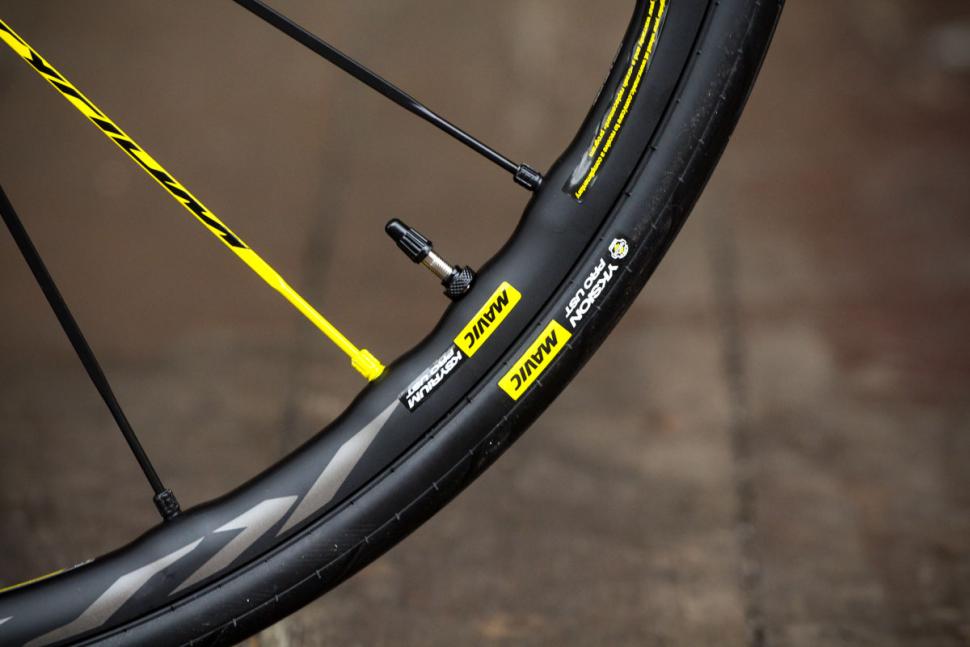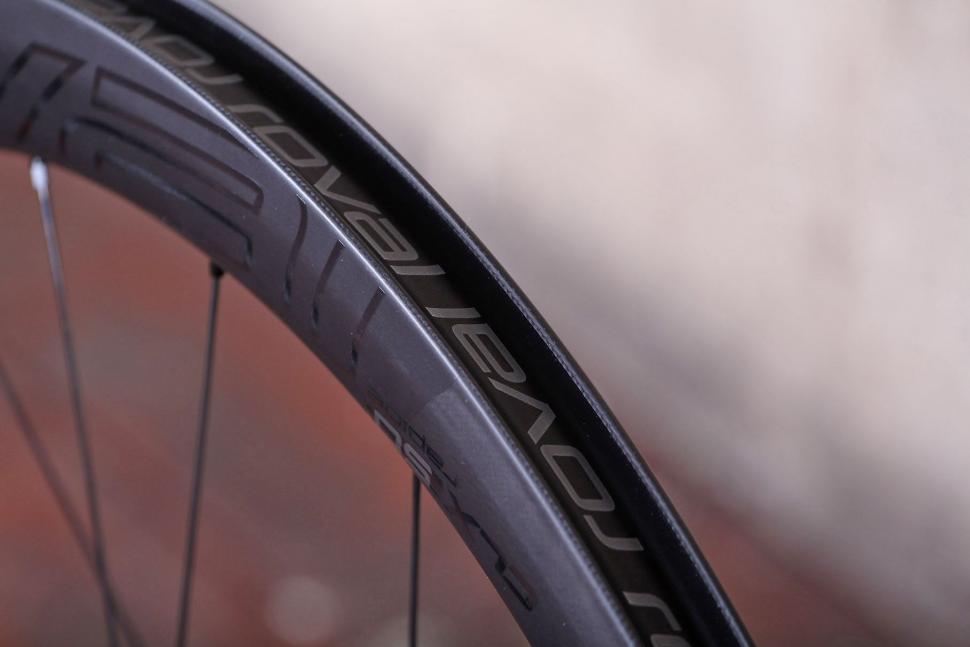- News
- Reviews
- Bikes
- Components
- Bar tape & grips
- Bottom brackets
- Brake & gear cables
- Brake & STI levers
- Brake pads & spares
- Brakes
- Cassettes & freewheels
- Chains
- Chainsets & chainrings
- Derailleurs - front
- Derailleurs - rear
- Forks
- Gear levers & shifters
- Groupsets
- Handlebars & extensions
- Headsets
- Hubs
- Inner tubes
- Pedals
- Quick releases & skewers
- Saddles
- Seatposts
- Stems
- Wheels
- Tyres
- Tubeless valves
- Accessories
- Accessories - misc
- Computer mounts
- Bags
- Bar ends
- Bike bags & cases
- Bottle cages
- Bottles
- Cameras
- Car racks
- Child seats
- Computers
- Glasses
- GPS units
- Helmets
- Lights - front
- Lights - rear
- Lights - sets
- Locks
- Mirrors
- Mudguards
- Racks
- Pumps & CO2 inflators
- Puncture kits
- Reflectives
- Smart watches
- Stands and racks
- Trailers
- Clothing
- Health, fitness and nutrition
- Tools and workshop
- Miscellaneous
- Buyers Guides
- Features
- Forum
- Recommends
- Podcast
TECH NEWS
 mavic_ksyrium_pro_ust_disc_wheel_set_-_rim_and_tyre.jpg
mavic_ksyrium_pro_ust_disc_wheel_set_-_rim_and_tyre.jpgOne step closer to a road tubeless standard? And why this matters to you
It looks like we might be one step closer to a universal road tubeless standard, as the bike industry bodies have worked together to develop and revise the ISO rim and ETRTO tyre standards to provide better tubeless tyre compatibility, according to a report by Bicycle Retailer.
What does this mean for you? It should mean much easier fitting of all tyres regardless of the tyre and rim brand combination, and especially applies to road tubeless where a good seal between tyre and rim is critical.
Tubeless tyres have the potential to banish inner tubes to the history books, but while they’ve mostly been accepted with open arms in the mountain bike world, roadies have been less welcoming of the technology. Much of that is down to the lack of standards meaning that there are huge compatibility issues between the different rim and tyre brands leading to well-publicised installation issues. We won’t lie, sometimes it can be really difficult to install a tubeless tyre.
- Beginner's guide to bicycle tyres: everything you need to know about clinchers, tubulars, tubeless and more
The situation has been getting slowly better, and it looks like it could soon be improving further. Bicycle Retailer reports that the industry has completed work with the ISO (International Standards Organization) and ETRTO (European Tire and Rim Technical Organization) standards bodies to “revise and harmonise the ISO 5775 rim standard and ETRTO tyre standard”. The updates should be published this year, leading to new rims and tyres designed to meet these standards.
Until now rim and tyre companies have been producing products using different tolerances and sizes because they couldn’t agree on a standard. Shimano and Hutchinson developed Road Tubeless in 2006 but it wasn’t widely adopted, and more recently Mavic has evolved its successful mountain bike tubeless technology into Road UST, and rolled it out to most of its road wheel lineup.
Mavic has been a key player in the updating of the ETRTO and ISO standards. Its Road UST is the only real recognised standard in use at the moment, and it adheres to the ISO 4210 and 5775 standards. Mavic has been pushing for the updating of these standards to accommodate the dimensions needed to make road tubeless work safely and easily.
“I think the new ISO/ETRTO standard will make things a little easier to mount, dismount and seat a tyre across all wheel, tyre make and model combinations,” said Jason Fowler, SRAM’s wheel category manager.
The new ISO 5775 is intended to be one global standard for all companies to follow and includes updated clincher, tubeless and tubular standards to address the many changes that have taken place in cycling, such as wider rims, wider tyres and aerodynamic considerations. What the new standard sets out are bead seat diameter, channel width and depth and sidewall height. Wheel manufacturers design to these guidelines and it’s the responsibility of tyre manufacturers to produce tyres to fit the rims.
The exact details of the new standard have yet to be published so we don't know the ins and outs yet, but as soon as we find out we'll obviously share them with you here.
It appears some companies have gradually been embracing the changes set out by the new standards so it’s not a case of everything suddenly being made redundant. At the Continental launch for the GP 5000 tubeless tyre, the German company was coy about these new standards that it was obviously privy too, and it would surprise us if the new tyres do indeed follow the guidelines
“We have returned tyre fit to what it was for at least 40 years prior to 2008. These are the clear, precise standards we needed. The new standards we now have ready and this is a critical success for our industry,” adds Challenge’s Morgan Nicol in a statement.
Challenge is another company that has re-engineered and re-sized its tyre beads to precisely fit rims with the new standard bead seat diameter.
“Tyre companies, Challenge included, can now produce tyres that can be mounted with your fingers. They can be inflated to extremely high pressures like 20+ bar (300+ psi) for our track tyres on steel rims precisely machined to standard in our factory. And we can now remove them, usually by hand, in case of puncture without fear of them blowing off and causing a crash,” says the company.
The ETRTO governs all wheeled vehicle standards, from bicycles to cars, aeroplanes, tractors and motorcycles. In 2016 the bicycle standard had not been updated since 2010 and there was apparently no mention of mountain bike or tubeless technology, so clearly needed dragging into the present. The ISO governs standards for all types of machines, from bicycles to appliances. Its standards are updated every four years.
We'll have more on this story soon...
David worked on the road.cc tech team from 2012-2020. Previously he was editor of Bikemagic.com and before that staff writer at RCUK. He's a seasoned cyclist of all disciplines, from road to mountain biking, touring to cyclo-cross, he only wishes he had time to ride them all. He's mildly competitive, though he'll never admit it, and is a frequent road racer but is too lazy to do really well. He currently resides in the Cotswolds, and you can now find him over on his own YouTube channel David Arthur - Just Ride Bikes.

🎵 Sunshine on my shoulders makes me happy, sunshine in my eyes can make me crash. 🎵
The main featured link goes to the actual product - unfortunately the auto-generated widget is pulling in links to the old product right now, but...
Kudos for trying. I hope he has included a request that any cycling coverage, if it ended up on the BBC, would be nothing like it's athletics...
Tyre-wall braking.? It is not a new idea however. Spoon braking dates back to the 1800s....
Me too. And, somewhere in the shrubbery, there lurks a pheasant who achieved high office in said RCUK.
Hospitals are journey generators - typically 30,000+ trips per day for a big site, with a woeful assumed need to get there by private car failing...
It's possible the issue is less to do with the Bluetooth connectivity (although it's sort of related) and that's because your workout coaching...
Apparently I liked that comment, but I have no memory of that....
Or this?
More than six times over the legal limit? She's the winner here. Her punishment is insufficient.